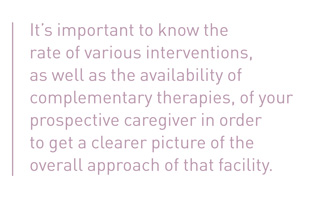by Brett Iimura and Iona Macnab
Women birthing in Japan have quite a range of choices. There are general hospitals with maternity wards, university affiliated teaching hospitals, dedicated maternity hospitals, small, doctor-run clinics, midwife-run birth houses, or your very own home. Even a wood-chopping birth experience in a 250 year old Edo farmhouse with an eccentric but experienced OB/GYN is possible! After deciding on the type of setting that best fits your vision of birth (see the previous issue of Weekender), you will need to find a midwife or doctor to attend to you.
Shopping around for a doctor can be problematic in Japan, as consultations for simply interviewing prospective doctors are uncommon. Although a few facilities are willing to set up a consultation visit for a fee, often the only way to get a feel for a particular doctor is going for an actual exam or from friends’ recommendations. Midwifery clinics are usually more accommodating of initial discussions sans exam. Complicating this scenario right now in Japan is the fact that many hospitals have closed recently. The remaining ones fill up quickly, forcing couples to decide by 15 weeks, sometimes even by their first appointment at six to eight weeks, in order to reserve a place eight months down the road. This is why thinking about birth issues before becoming pregnant is vital.
 Some common concerns of pregnant women revolve around the use of medical interventions and non-medical alternatives. It’s important to know the rate of various interventions (IVs, electronic monitoring, induction, forceps, cesareans, etc.), as well as the availability of complementary therapies (use of a bath, acupuncture, massage, etc.), of your prospective caregiver in order to get a clearer picture of the overall approach of that facility. For example, episiotomy rates (an incision in the perineal area to enlarge the vaginal opening to speed up birth) vary greatly among caregivers. Although it is a life saving intervention when used appropriately, it is notoriously overused in many facilities. Research shows that the factor that most determines whether or not a woman will receive this intervention is the overall rate of her caregiver, not the size of the baby or the particular characteristics of an individual woman. Generally speaking, practitioners who follow the midwifery model of care tend to have lower rates of medical interventions. This includes some of the small, doctor-run clinics and a few of the larger hospitals.
Some common concerns of pregnant women revolve around the use of medical interventions and non-medical alternatives. It’s important to know the rate of various interventions (IVs, electronic monitoring, induction, forceps, cesareans, etc.), as well as the availability of complementary therapies (use of a bath, acupuncture, massage, etc.), of your prospective caregiver in order to get a clearer picture of the overall approach of that facility. For example, episiotomy rates (an incision in the perineal area to enlarge the vaginal opening to speed up birth) vary greatly among caregivers. Although it is a life saving intervention when used appropriately, it is notoriously overused in many facilities. Research shows that the factor that most determines whether or not a woman will receive this intervention is the overall rate of her caregiver, not the size of the baby or the particular characteristics of an individual woman. Generally speaking, practitioners who follow the midwifery model of care tend to have lower rates of medical interventions. This includes some of the small, doctor-run clinics and a few of the larger hospitals.
A major stumbling block to building a relationship with a doctor in a large facility is the on-call system, under which a woman may see a different doctor at each visit and will not know in advance which one will attend the birth. The language barrier and limited time allowed for appointments can also make it difficult to thoroughly discuss the issues that are important to her. Some suggestions for working your way around these impediments are to keep a running list of your questions between appointments so you have them at your finger tips to ask during your allotted face-to-face time. Giving your caregiver a written list of questions and having him or her prepare answers for you by the next appointment is another strategy that may help. Asking for an appointment at the end of the day when there is no pressure on you to leave quickly for the next woman in line allows for a more in-depth discussion. Choosing a smaller facility run by a single doctor or midwife also usually assures that there will be more time to build up a trusting relationship.
A more natural approach to birth, coupled with the use of complementary therapies, can usually be found at midwifery clinics, some doctor-run clinics, and a select few of the large hospitals. Intervention rates tend to be higher at most of the larger hospitals, especially university hospitals where part of the emphasis is on teaching proper use of the available technology. University hospitals, as well as some larger general or maternity-dedicated hospitals, also have NICUs (Neonatal Intensive Care Units). If you or your baby have any medical conditions that might warrant close observation during pregnancy or immediate care during the birth process or soon after, then these tertiary care facilities may be the most appropriate.
Parenting Tip:
Rates of medical interventions at the various facilities in Japan are not generally published and are often actively obfuscated. It is difficult to gain a clear, overall view of the trends simply from listening to the individual experiences of friends. To help you sift through the information, Childbirth Education Center (CEC) keeps tabs on various facilities by cultivating relationships with many caregivers and maintaining an informal network with staff members to get the ‘inside scoop.’ This information is presented during CEC’s Early Pregnancy & Choosing a Caregiver class (www.birthinjapan.com). The class also provides an opportunity to ‘dream’ about and explore the kind of birth you would like to experience, and then try to match that image with the appropriate caregiver to help turn that dream into a reality here in Japan. The Japanese-only site www.web-reborn.com offers reviews of many facilities throughout Japan.
Brett Iimura ICCE, mother of two, is the director of the Childbirth Education Center (CEC), serving parents-to-be throughout Japan since 1997. Iona Macnab IBCLC is a lactation consultant in private practice in Tokyo and a mother of three. They have over thirty years of combined experience in Japan, and much experience raising bilingual, bicultural children!









